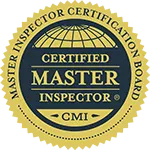Kansas City Area Radon Testing
Page Content
- Radon Testing: Because Sometimes What You Can’t See Can Hurt You
- “What is radon gas?”
- “Does Kansas City have high Radon levels?”
- “What are the symptoms of Radon gas exposure?”
- “How does Radon gas get into my home?”
- “How do I find the Radon level in my home?”
- “How do I remove Radon gas from my home?”
- “How long for radon levels to drop after a mitigation system in installed?”
- “Should I retest after a mitigation system is installed?”
- “Should I monitor Radon levels after I move in?”
- Common Radon Myth #1: “If my neighbor’s radon level is low, mine should be low, too.”
- Common Radon Myth #2: “If I have a walkout basement, my radon levels should be low.”
- Frequently Asked Questions
- 30 Min. Home Inspection Checklist – Only $18.99
Radon Testing: Because Sometimes What You Can’t See Can Hurt You
In Kansas City, radon gas is everywhere, so along with the home inspection, termite inspection, and sewer scope, radon testing rounds out the 4 most important inspections every homebuyer should consider.
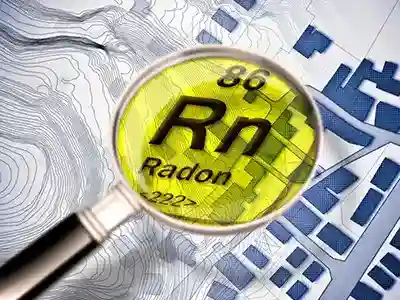
“What is radon gas?”
Radon is a gas that’s expelled from the breakdown of Uranium-238 in our soil.
It is all around us (like mold), colorless, tasteless, odorless, and only becomes a problem when we’re exposed to high levels for long periods of time, usually in places like home, work, and school.
Radon gas is also present in water, rock, and stone.
There used to be a concern that granite countertops could elevate radon levels in homes, but the EPA found the levels too small to be an issue.
It is measured in picocuries per liter (pCi/L).
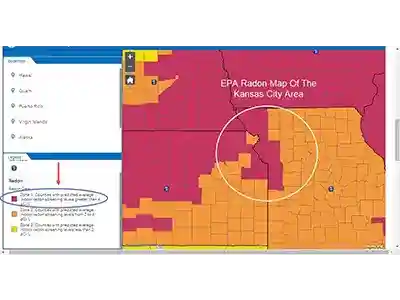
“Does Kansas City have high Radon levels?”
Yes. According to the EPA, the entire Kansas City area is subject to high radon levels.
Here is the EPA radon map of Kansas.
They’ve also determined that a level ≥ 4 pCi/L are hazardous and should be corrected.

“What are the symptoms of Radon gas exposure?”
Breathing radon gas causes lung cancer.
In fact, the EPA has determined that each picocurie (pCi/L) has the same cancerous effects as smoking 1 cigarette per day. It is the leading cause of non-smoking-related lung cancer in the United States.
Look for general cancer symptoms like unexpected weight loss and fatigue.
Also, take notice of things like shortness of breath, coughing, pain or tightness in the chest, hoarseness, or trouble swallowing.
If you experience any of this AND you already smoke, stop.
Radon levels can also be higher than normal during stormy, low-pressure conditions.
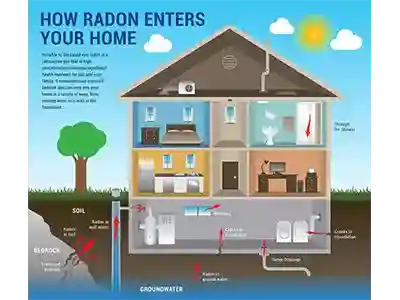
“How does Radon gas get into my home?”
Since radon gas comes from the soil, levels are usually highest in the basement or crawl space.
It seeps in through any cracks or openings in floors, walls, and well water lines.
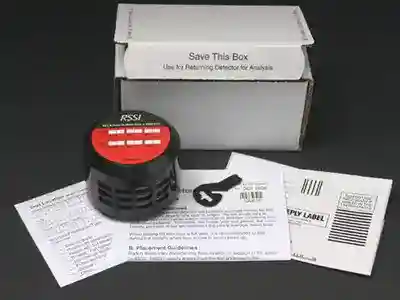
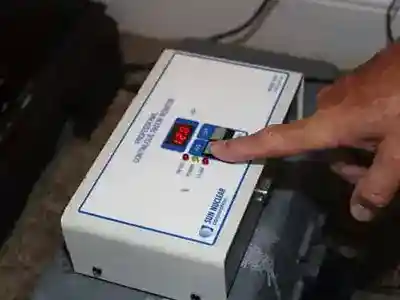
“How do I find the Radon level in my home?”
There are 2 types of radon tests you can perform:
- Home test kit. This delivers the most accurate results since it measures levels for a full 12 months before you send it to the lab.
- Professional Radon testing company. This is done during real estate transactions for quick results during a short inspection period. It’s less accurate, but still useful for this purpose. This test is particularly sensitive to low-pressure conditions and tampering.
This may not sound ideal, but electronic monitors are smart and have built-in safety measures to protect you from sinister motivations.
They’re also lab-calibrated each year to maintain maximum accuracy.
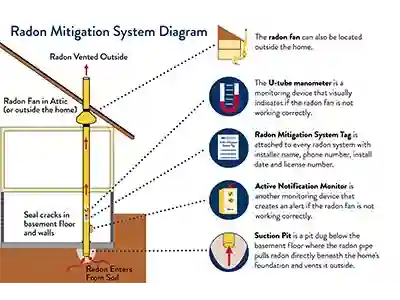
“How do I remove Radon gas from my home?”
When your radon level is ≥ 4.0 pCi/L, the EPA recommends installing a radon mitigation system to bring it down to a safe level.
A mitigation system is simply a length of white PVC pipe attached to a pump that sucks the air out from beneath your home and sends it outside. Some systems are so effective they reduce the level up to 99 percent.
Radon fans are the only moving part and last 5 to 10 years of non-stop operation. They cost $200-$350 to replace.
“How long for radon levels to drop after a mitigation system in installed?”
It should take about 48 hours for radon levels to normalize within the home after a mitigation system is installed.
“Should I retest after a mitigation system is installed?”
Yes. You should retest within 30 days of having the system installed and it’s recommended to have your home tested every 2 years.
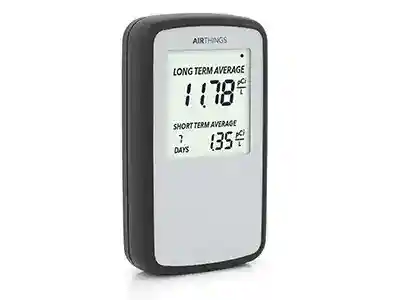
“Should I monitor Radon levels after I move in?”
It’s never a bad idea to safeguard yourself and your family against an invisible cancer-causing killer. And there are a few good continuous-testing monitors you can buy that measure radon levels 24/7.
That said, anyone who understands radioactivity also understands decay and won’t be surprised to hear that radon levels get lower over time as the gas dissipates into the air (radon gas has a half-life of 3.8 days).
Common Radon Myth #1: “If my neighbor’s radon level is low, mine should be low, too.”
Unfortunately, no.
But not too unfortunate since the same applies if your neighbor’s level is high.
Radon levels vary so much you can’t even predict what it might be next door, let alone the same street or even the same neighborhood.
In 2008 I saw this scenario play out. The homes were even tested at the same time.
One house came back with a level of .2 pCi/L and the other came back at 22 pCi/L.
I’ll never forget that. It showed me firsthand just how unpredictable radon levels could be.
Common Radon Myth #2: “If I have a walkout basement, my radon levels should be low.”
Again, this is not correct.
Radon gas comes from the soil, so if your home sits on the ground, it has the same chance of having high levels as anyone else.
The gas will still seep in through cracks, openings, and plumbing pipes just like any other home.
The only way to stop it is to prop the house up on stilts.
Frequently Asked Questions
Yes.
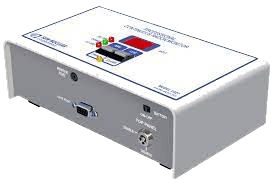
We use the Sun Nuclear 1027 electronic radon monitor.
Radon gas is the #1 cause of lung cancer for non-smokers in America.
And because it’s so common in Kansas City, we use our own professional electronic radon testing equipment.
It’s a 48-hour test, so we will either drop it off during the inspection and come back in 2 days to pick it up.
Or we can drop it off 2 days early so the results will be ready on the day of the inspection.
30 Min. Home Inspection Checklist – Only $18.99
Would YOU Like to Check the Bones Yourself BEFORE the Home Inspection?
This no-nonsense field guide is based on our Major-Items Inspection and will help you decide BEFORE your home inspection if the home has good bones or is just a money pit in disguise.
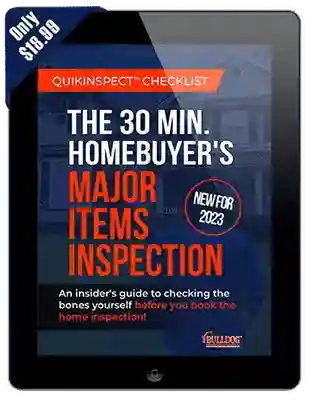
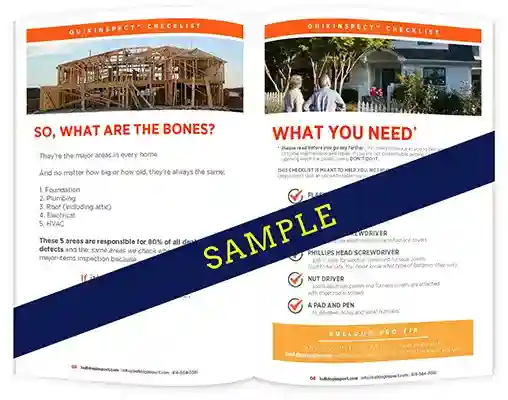
13 Pages Fully Illustrated
Immediate PDF delivery + flipbook
Save time and hundreds (sometimes thousands) in wasted home inspection fees.
By finding out for yourself if there are major issues hiding in plain sight BEFORE the home inspection.
Find out for yourself if there are major issues hiding in plain sight BEFORE the home inspection.




